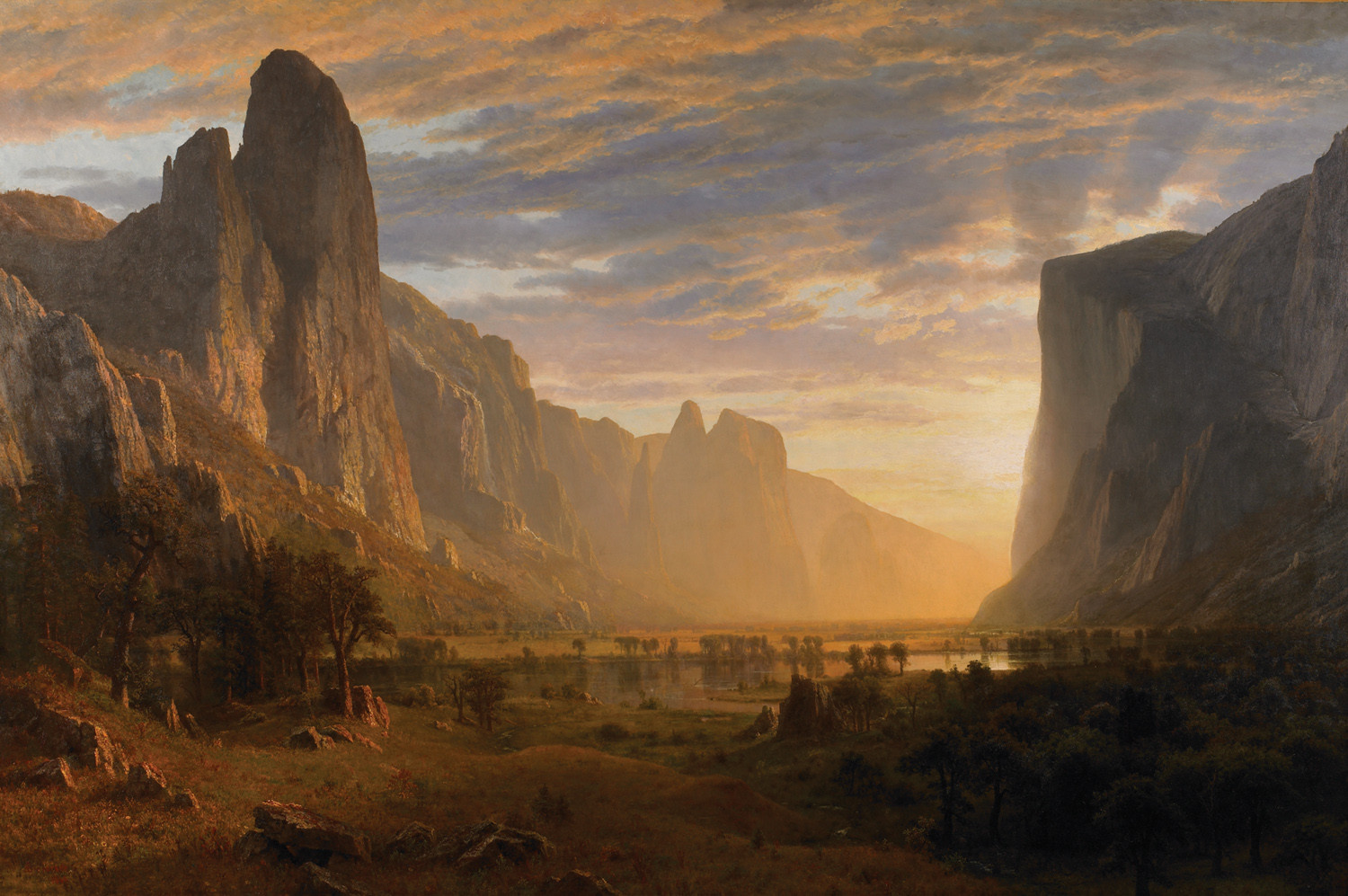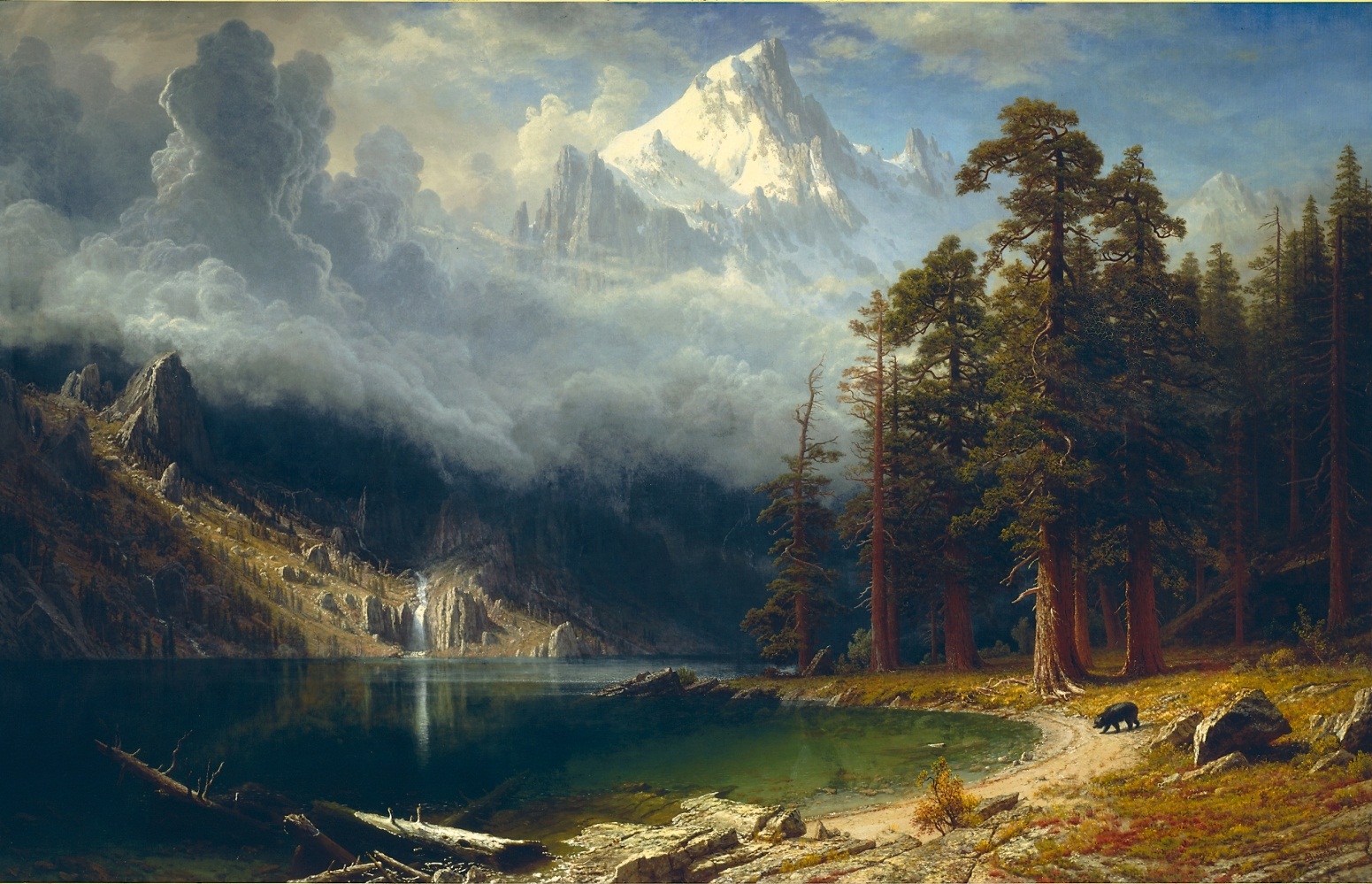Albert Bierstadt’s adept handling of the brush, sensitivity to composition and color, and ability to capture the atmospheric qualities of light place him among the most effective painters of the natural splendor of the American West. This view of Yosemite Valley is not only a masterpiece of American landscape but also a document of the history of Western expansion in the United States. At just over five feet tall and eight feet wide, the grand dimensions of this work serve to convey the immense, wild beauty of Yosemite to encourage Americans living east of the Mississippi River to explore and to settle the great frontier.
Bierstadt’s epic American landscapes reflected a nationalist vision of America in the 19th century. In search of new subject matter, Bierstadt joined an expedition through the Rocky Mountains in 1859. There he discovered the majestic vistas that would become his signature. Completed at the end of the Civil War, this work presents a calm and awe-inspiring view of the American West. The spectacular, natural panorama suggested the possibility of a new beginning for those living in war-ravaged states back east. The artist left the painting vacant of almost all animal or human life, suggesting that this pristine Eden–untouched by the bloodshed and suffering of Civil War–lay waiting to be discovered.
- Clinton


 Albert Bierstadt
Albert Bierstadt